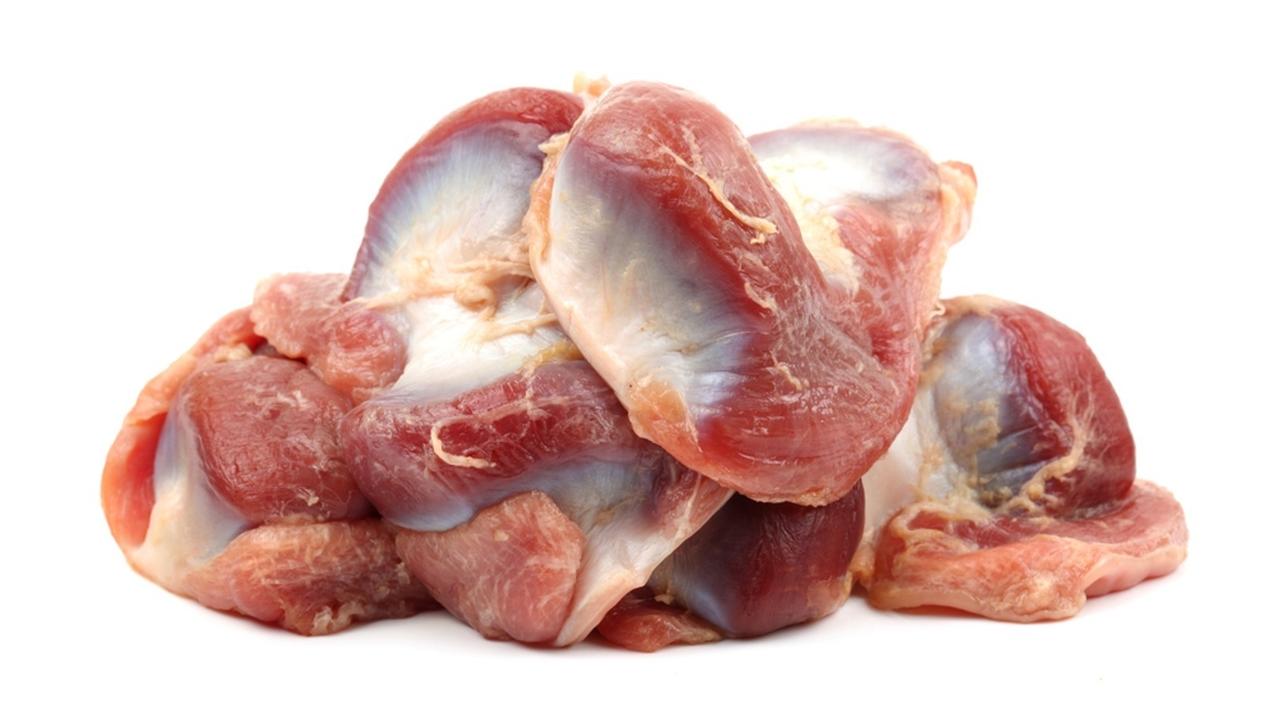
Are Gizzards an Offal Idea?
Feb 05, 2018“Ewwwww!” I can feel the push back already! But gizzards are considered a delicious treat in many cultures. The price is right, they are nice and chewy, and are the perfect paleo-compliant snack.
I grew up on a small fruit and poultry farm in the Hudson Valley so gizzards, liver, hearts and other offal have always been a part of my life. A gizzard is a thick-walled part of a bird’s stomach for grinding food, typically with grit. Gizzard is strong muscle, which is why it’s so chewy.
Gizzards are gray and brown, but the best are tinged with yellow or green, colors that prove the bird got to roam in the great outdoors and dine on bugs and worms.
Humans don’t have gizzards, but that doesn’t stop writers from using words like “She wanted to rip the gizzards out of the evil queen.”
“Mr. Leopold Bloom ate with relish the organs of beasts and fowls. He liked giblet soup, nutty gizzards, a stuffed roast heart, liver slices friend with crustcrumbs, fried hencod’s roe.” — James Joyce
CHOLESTEROL AND FAT
Gizzards are notably high in cholesterol. That leads to warnings on mainstream nutrition sites but high cholesterol is more a benefit than a drawback. It’s a “fat of life” that our bodies and brains need cholesterol to manufacture reproductive and mood hormones. Mother Nature, after all, made cholesterol the root of our hormone tree.
Gizzards are low in fat. Whether that’s good news or bad, depends on your point of view. But those on ketogenic diets can easily crank up the fat level by sauteing the livers in ghee, lard, bacon fat or duck fat. And if butter makes things better, add plenty before you serve.
MINERALS
Gizzards are an excellent source of heme iron, the kind we need to produce hemoglobin and myoglobin, two proteins that carry oxygen throughout your body. Iron boosts the production of ATP, a source of energy for our tissues, and boosts white blood cell function so that we can fight off infection. The Institute of Medicine recommends between 8 and 18 milligrams of iron per day for adult men and women, and people experiencing fatigue may well need more. A 4-ounce serving of chicken gizzards contains almost 3 milligrams of iron. People who enjoy their chewies will easily eat that much.
Gizzards are also one of the few foods rich in selenium. Selenium plus vitamin C add up to antioxidant protection. Challenged by thyroid issues? Selenium helps us synthesize thyroid hormones. The Institute of Medicine tells us that a four-ounce serving of chicken gizzards contains 29 micrograms of selenium per 4-ounce serving, or 53 percent of the selenium we need each day. In contrast Brazil nuts — reputed to be very high in selenium — may or not contain much of the mineral. Worse, Brazil nuts are likely to come with mold.
B VITAMINS
Gizzards are rich in B vitamins, particularly niacin and riboflavin, two very important players on our B complex energy team.
Riboflavin (B2) is crucial to the production of glutathione, our master antioxidant. Low riboflavin impairs the body’s absorption of iron and weakens the function of the thyroid gland.
Niacin is critical for the thyroid too as well as heart health and circulation. With 0.262 milligram of riboflavin per 4-ounce serving, chicken gizzards provide between 16 percent and almost 24 percent of the RDA for adult men and women.
All in all, a satisfying, nutrient-rich food.
EAT THOSE GIZZARDS!
There are lots of ways to eat your gizzards. Here are three ways that I make them. Whatever recipe you choose, keep in mind that gizzards are tough and benefit from long, slow cooking. Save the cooking water as it’s rich in gelatin. If not making gizzard soup, I add it to any other broth I have on hand. Check your gizzards over carefully before cooking in case there are bits of dirt, stones and plants to remove from the folds. Can’t seem to find gizzards locally? My friend, John Wood, at US Wellness carries great chicken gizzards, as well as the beef he’s famous for. To learn more click here.
- Buttery Gizzards
Bring gizzards to a boil and simmer until tender.
Take the gizzards out of the cooking water and saute in Pure Indian Foods ghee. When ready to eat, add pastured butter, salt and pepper to taste. That’s it. A simple, easy, chewy paleo snack.
- Coconut Gizzards
Bring gizzards to a boil and simmer until tender. Dredge with coconut flour, salt and pepper and shake off any extra. Heat coconut oil, saute gizzards until crisp and brown. Turn over the gizzards and cook another couple minutes on the other side. Enjoy your coconutty chewy paleo snack.
- Gizzard Soup
2 pounds chicken gizzards
2 tbsp bacon fat
1 parsnip
3 yellow squash
1 red pepper
1 onion
4 cloves garlic
2 cups beef broth (Click here to buy my favorite Flavor Chef broth)
4 cups water
Brown gizzards in bacon fat. Chop the vegetables and add to the gizzards when they have browned. Saute a bit, then add beef broth and water. Bring to a boil and then simmer for an hour (or longer if you prefer your gizzards more tender). Add salt and pepper to taste.
Love gizzards? Hate ‘em? Let me know in the comments below.


